© tetronik GmbH. All rights reserved.
© tetronik GmbH. All rights reserved.
Evacuate Hotel Guests Orderly and Effectively
More security for your guests
In the event of fires or other threats, hotel guests and employees must be brought to safety both quickly and reliably, and in a calm and disciplined manner. But crisis situations in particular can easily trigger stress and uncertainty and disrupt the smooth flow of some very complex emergency procedures – especially if routines gained through regular drills are lacking.
Automated communication processes help employees and managers to confidently carry out all necessary safety measures in an emergency.
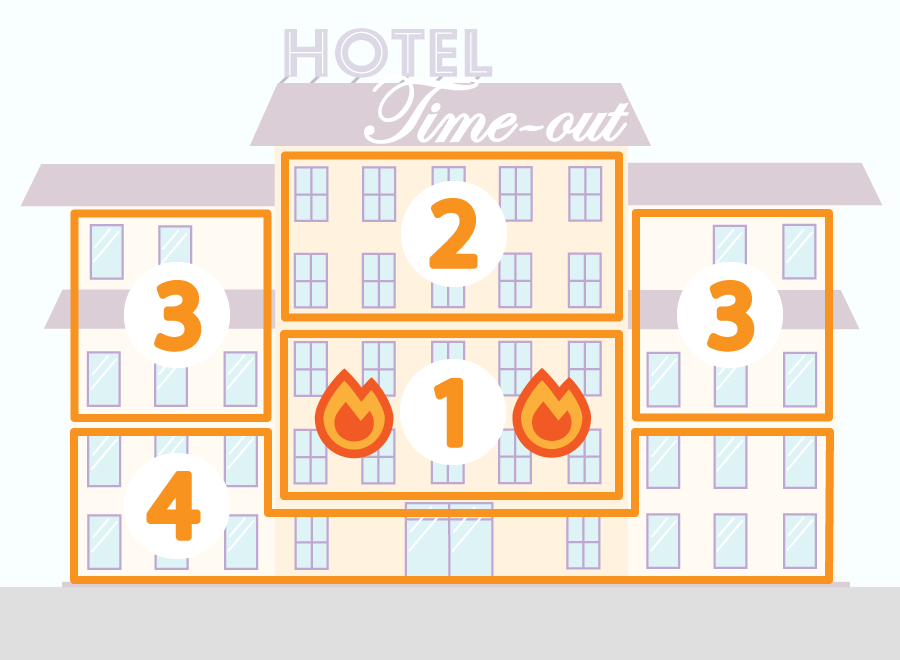
This is how you bring your guests to safety in a calm and orderly fashion
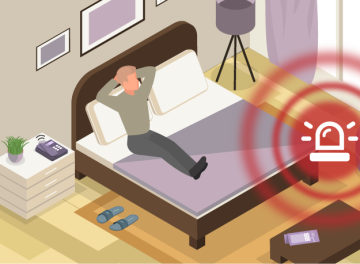
In the hotel "Time-out" there is a fire
Mr. Snovsky is relaxing in his hotel room at the "Time-out" hotel. When he hears a siren in the corridor, he is unsure what he should do. Before he can even call the front desk to find out, his room phone rings and plays an announcement: "Attention, fire alarm," a calm voice informs him. "Please exit the building by the following route: ..."The announcement helps Mr. Snovsky to follow the escape plan well as he immediately makes his way outside.
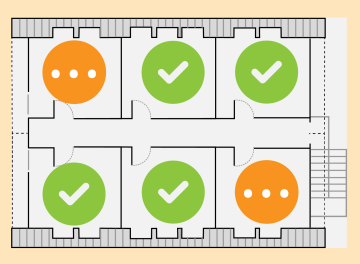
Thanks to the secondary alerting no one is forgotten
In addition to the sirens in the corridor, this "secondary alerting" ensures that absolutely every person in the rooms is reached and secured. The DAKS alarm server reliably calls all room telephones and, based on any unanswered warning calls, the security staff can see where action is still required and in which rooms people still need to be brought to safety.
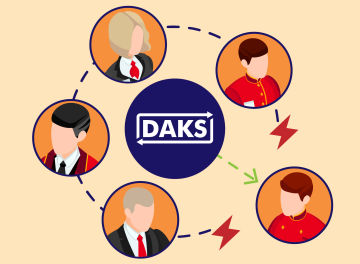
DAKS is the reliable helper in the background
In his function as a rescue worker, the hotel employee Alexander is connected to other rescue workers and to the responsible manager in a telephone conference so that information about the evacuation progress can be continuously exchanged and updated. Because Alexander is on the move all the time, his connection briefly breaks off while he is in the basement. DAKS always re-establishes the conference call independently – as a result, Alexander is automatically back on the call within a short period of time and he can devote his full attention to rescuing the guests.
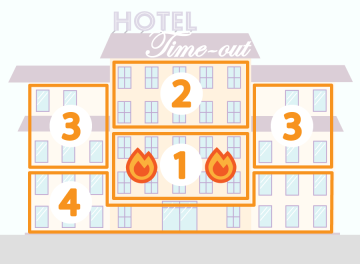
The building is cleared in separate parts
The segmentation of the alarm and the evacuation enables Alexander and his colleagues to react to different hazards and dangerous locations as well as to avoid possible congestions or panic during the evacuation of the building. DAKS receives the appropriate signal directly from the fire alarm system and then supports the orderly evacuation of the area directly affected by the fire by making targeted announcements. In this way, guests receive important information about the escape route and instructions on how to behave via integrated loudspeakers. Guests in the remaining endangered sections of the building are guided out of the building in the same way with announcements in a specific order via the respective escape routes.

Regular drills are perfectly supported by DAKS
Finally, all the guests are safe: Mr. Snovsky is already actively participating in the nervous murmur that has spread among the evacuated guests.
Alexander, too, has now left the building and is relieved that everything went well in this emergency. Thanks to regular drills of such scenarios with DAKS, the staff was well-prepared. Exercises were logged in detail by DAKS, which helped in evaluating and optimizing procedures.
Advantages of secondary alerting and segmented evacuation

Safety for the guests
- Guests are brought to safety quickly, effectively and reliably.
- Escalations and panic are avoided as far as possible.

Clarity for the employees
- Employees can practice and are well prepared for an emergency.
- The employees radiate safety towards guests and can act quickly and confidently.
- Complex evacuation processes are simplified and accelerated.
- The risk of stress-related errors is reduced.

Protection for those responsible
- In the event of an alarm, DAKS handles many urgent tasks simultaneously and reliably. The option of alarm confirmation and the automated telephone conference calls provide a constant overview of the entire process, which is also fully logged.
- Some dangerous situations do not even arise with DAKS: it reports when particularly important access points (e.g. personnel doors) are open and allow unauthorized access, or it automatically forwards alarms to the technical service in the event of faults in the building services and fire alarm system.
- DAKS integrates the existing IT and telecommunications infrastructure and reliably handles various communication tasks: both in everyday hotel life and in emergency situations.
- The security and reputation of the hotel is enhanced by efficient processes.
Discuss your individual
application project with us
Add this solution
to your shortlist
Related Application Examples

Fulfill Guests' Wishes in Hotels Effectively

Preventing Violence and Protecting Employees in the Workplace with 'Silent Alarm'
- Home
- Applications
- Tourism, Events & Culture
- Evacuate Hotel Guests Orderly and Effectively
© tetronik GmbH. All rights reserved.




